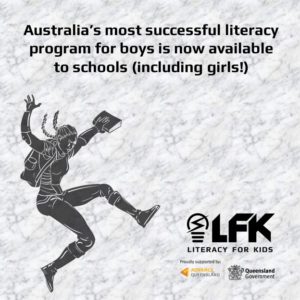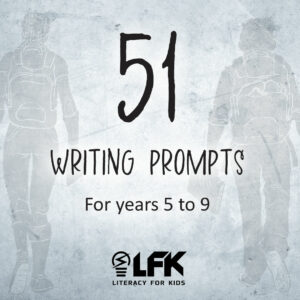Improving Writing Stamina: 5 Common Challenges and How to Help Students

Why do certain students possess the ability to write continuously while others find it challenging to put down even a few sentences? What exactly is meant by “writing stamina”? After poor national writing results last year, writing is high on many schools’ priority list. One of the most common challenges that I hear is “My students lack writing stamina”.
This is why it’s important to delve into the significance of cultivating this skill and to understand the obstacles that students encounter in maintaining their writing momentum.
What is Writing Stamina?
In basic terms, writing stamina is going to refer to a student’s ability to engage in the writing process for extended periods with sustained focus and productivity. Key words here: sustained focus and productivity. It’s not merely about the amount of time a student spends writing, but also about sustaining both the quality of work and engagement throughout the writing session.
There is a trifecta of elements that must be present if we are going to move a child forward with their endurance and if one of these areas are weak, then you can see why it’s going to become a challenge for stamina to begin taking form.
- Physical Strength ~ Physically, a child must have the requisite hand strength for handwriting.
- Cognitive Ability ~ From a cognitive perspective, that child must maintain sustained thoughts and concentration.
- Emotional Aspect ~ Emotionally, they need to sustain interest and motivation.
Here’s the rationale for why writing stamina holds significant importance and should be a top priority in the learning process.
- Academic Success
As your students progress through school, they are expected to write longer pieces and to engage in more complex writing tasks. So it follows that having strong writing stamina is actually crucial for meeting these high academic demands and challenges that students will be facing in their very near future.
- Test Performance.
Many standardized tests (such as the upcoming NAPLAN) have timed writing components to them, so students with better writing stamina can perform more effectively under these timed conditions. Without the stamina, the time is spent in worry, and in overwhelm, and in panic, and that’s never going to produce a result, or a test score, that’s going to be representative of what that child probably really knows, but just can’t seem to transfer to paper.
- Extended Practice to Develop Writing Skills
The more we can get pupils writing, the better their writing skills become. Writing stamina allows for this extended practice and for that slow build of increased focus over time. We can use the analogy of an athlete – the more their muscles are being strengthened and trained in these short, manageable reps, the stronger they get over time. They can lift heavier weights. They can complete more reps eventually. It is a transition of working up to a period of sitting for 30 minutes in a sustained, focused, concentrated form of writing.
It’s about looking forward to future, professional endeavours for our students – preparing reports, essays, research, grant applications etc.
Challenges that Students May Face and Actionable Strategies that Help
The truth is that students continue to encounter difficulty and stress when attempting to maintain genuine writing efforts. Let’s look at various challenges that you can break down and solutions that you can employ:
Physical Fatigue
Evident in younger students, the physical act of writing can be tiring. It’s going to lead to discomfort and decreased focus. While this starts very young, like prep and grade one, imagine the negative feelings linked to writing that become pervasive as they enter fourth grade and fifth grade, now having longer writing tasks, but never really starting in a place where it was ever enjoyable. Defeat sets in prematurely as they enter upper primary and high school.
Actionable Strategies: Incorporate short, regular breaks during extended writing sessions to prevent physical exhaustion. Try setting a timer and suggesting, “Hey, we’re going to take a little brain break.” or “We’re going to take a little stretch break.” for a 60 second mental break. Try to decrease the frequency of these breaks over time.
Try ergonomic tools such as a pencil gripper or a certain type of pencil. Consider that their wrists and hands may hurt from gripping a pencil too tightly, incorrect grip (I see this all the time!) or their arm/wrist is on the edge of the desk. Finding a remedy for physical discomfort will help the process of sustained writing time.
Mix in different types of writing activities that don’t always call on handwriting. Consider the voice to text feature on an ipad or computer.
Cognitive Overwhelm
Writing requires thinking. It requires planning and creativity, which can be mentally draining for students, particularly for those complex tasks. Adding the components of the writing process (punctuation, ordering ideas, grammar etc) on top of this can overwhelm students, leaving their minds exhausted. It becomes almost impossible for them to perceive writing as enjoyable or engaging, as the mental load becomes too taxing.
Actionable Strategies: Attempt to divide writing tasks into smaller, manageable steps to make the process less overwhelming. Checklists are useful here, where students can see where they need to get to. They’re only responsible for that next box task to be able to check it off. This helps our learners with that cognitive overload.
Try graphic organisers, which help learners to organise their thoughts prior to writing. Guide them to transfer and expand those thoughts with added detail – possibly the next day. Brainstorming, planning and writing all in one session can be a lot for children with cognitive overload.
Lack of Interest
If students lack interest in the topic or writing style, they’re likely to struggle to maintain engagement over extended periods. It’s as straightforward as that. This issue isn’t related to physical ability or cognitive processing—it’s directly tied to emotion. When students lack enthusiasm or passion for the subject matter, they simply don’t want to spend 20 to 30 minutes sitting and writing about it respectfully. They’re just not invested. Their heart isn’t in it.
Actionable Strategies: A tricky issue for teachers as we can’t develop individual writing tasks to cater to 25 interests in the classroom! However, try some of these ideas. Offer choice where possible as this automatically increases engagement. Linking a writing task to something that’s happening in the real world ( particularly their world) means that they have context and connection, and encourages them to be more interested and willing to share their writing ideas.
Fear and Anxiety about Writing
Each teacher will know this student ~ these students worry about making a mistake or not writing well. This can be seen in the students who are perfectionists. This challenge also encompasses learners who are a grade level or two behind, as well as those who have high expectations placed on them. They’re reluctant to disappoint their teachers, parents or themselves. These learners can feel paralysed when these fears are present.
Actionable Strategies: Positive reinforcement is key to building confidence. Words of affirmation, celebrating success and offering encouragement are important. I’ve found that a checklist and ticking off student names is a great way to ensure that there is an even spread of reinforcement (or sharing of writing ideas) across the whole class. A classroom atmosphere where mistakes are seen as learning opportunities will help these learners to move past the fear of writing failure and attempting tasks. Peer support goes a long way to helping students understand that their peers experience similar writing challenges too.
Short attention span
Due to the prevalence of digital media, certain students might experience shorter attention spans, which can pose challenges in maintaining focus on writing tasks for extended durations. This is particularly relevant to students with ADHD.
Actionable Strategies: For learners with a limited attention span, we suggest using short, timed writing exercises to gradually increase a student’s focus over time. Their brains and their bodies are just active. Please email us for a copy of our image-rich stimulus pictures that are ideal for these learners.
Summing Up
Pupils that are lacking in ‘writing stamina’ can be attributed to an array of problematic causes. If we don’t decipher the underlying issues, then we can’t find solutions for students’ struggles. There are no quick fixes for these challenges, but a better understanding and creating next steps can be a useful starting point.
 Want more from your literacy program?
Want more from your literacy program?
Certain schools, such as Jandowae State School in Queensland, have proven that it’s possible to improve outcomes significantly. They used Literacy for Kids with Years 3 through 10. After independent testing, they saw that 100% of their Year 6 cohort improved their Reading Comprehension in less than 12 months. Here are their findings from their Literacy co-ordinator ~
Worried about your class’ literacy? Want to enquire about your child’s literacy development? Send a message to info@literacyforboys.com.au or info@literacyforkids.com.au We love hearing from teachers and parents!
Want your students to finish strong in their literacy? Want more from your literacy program? Contact us for a 30-day free trial in your school or classroom. New schools receive this terrific Teaching Resource: 51 Writing Prompts. These were a complete hit with our schools last year and you will not be disappointed with these image-rich, kid-centred Writing Prompts.




Check out our blogs for more ideas and tips.
Australia’s Reading Fail: Grattan’s Damning Report of our Literacy Landscape
Identify Comprehension Gaps with these great cards
Steps to Successfully Support Disengaged Learners
See us featured in The Educator Australia magazine
Research confirms that early reading boosts literacy
Boys Love LFB – Here’s what they have to say!
Get boys reading in the digital age
Why write? Tips for reluctant writers
Brought to you by Tanya Grambower

